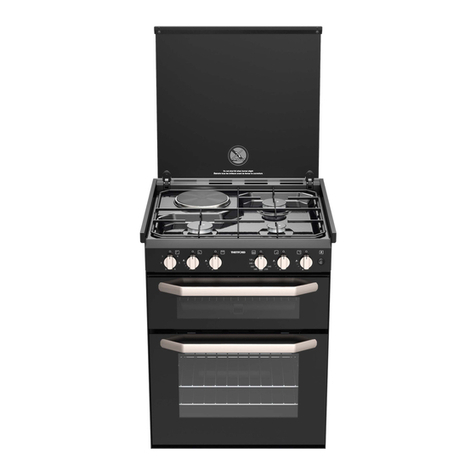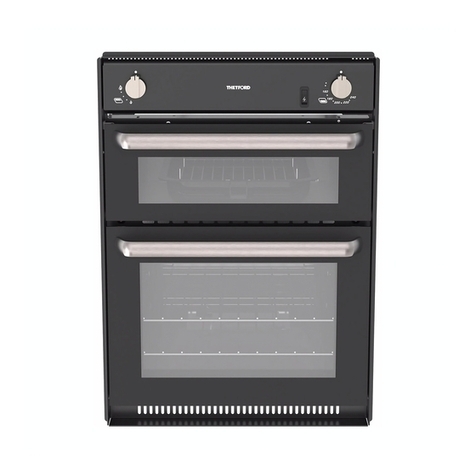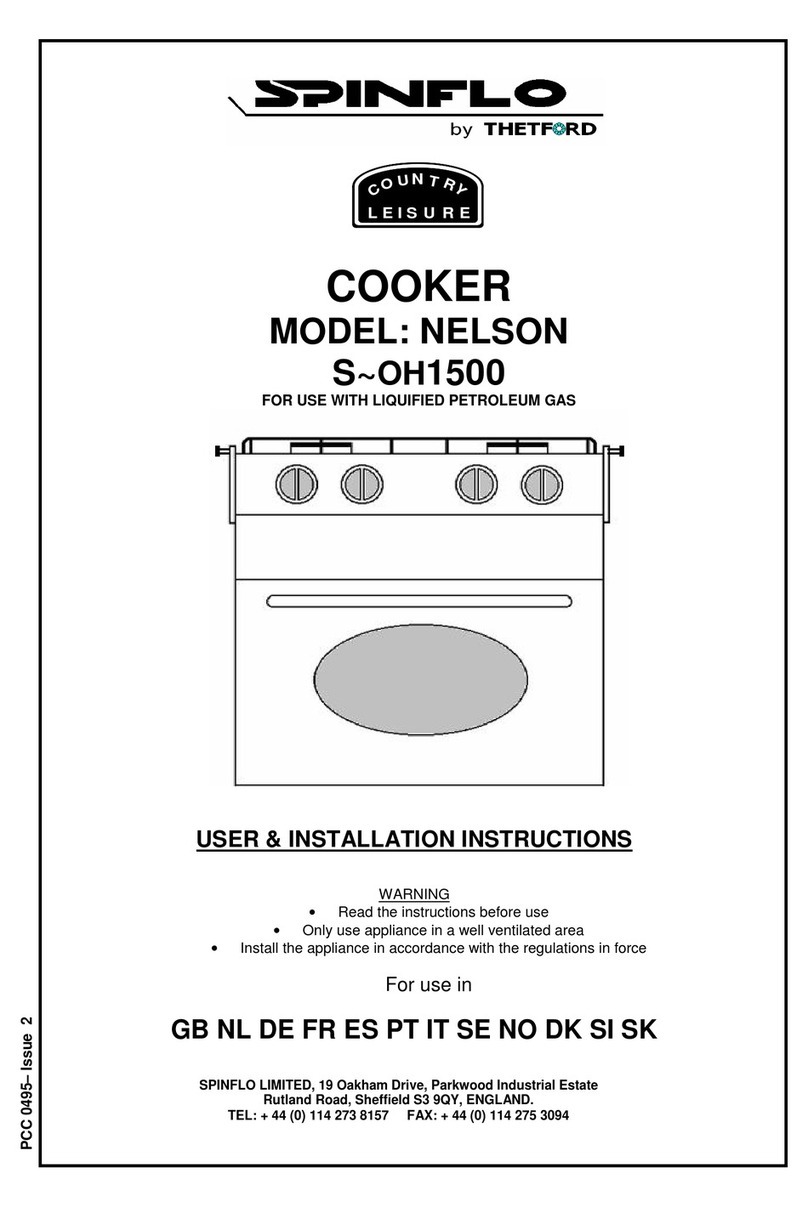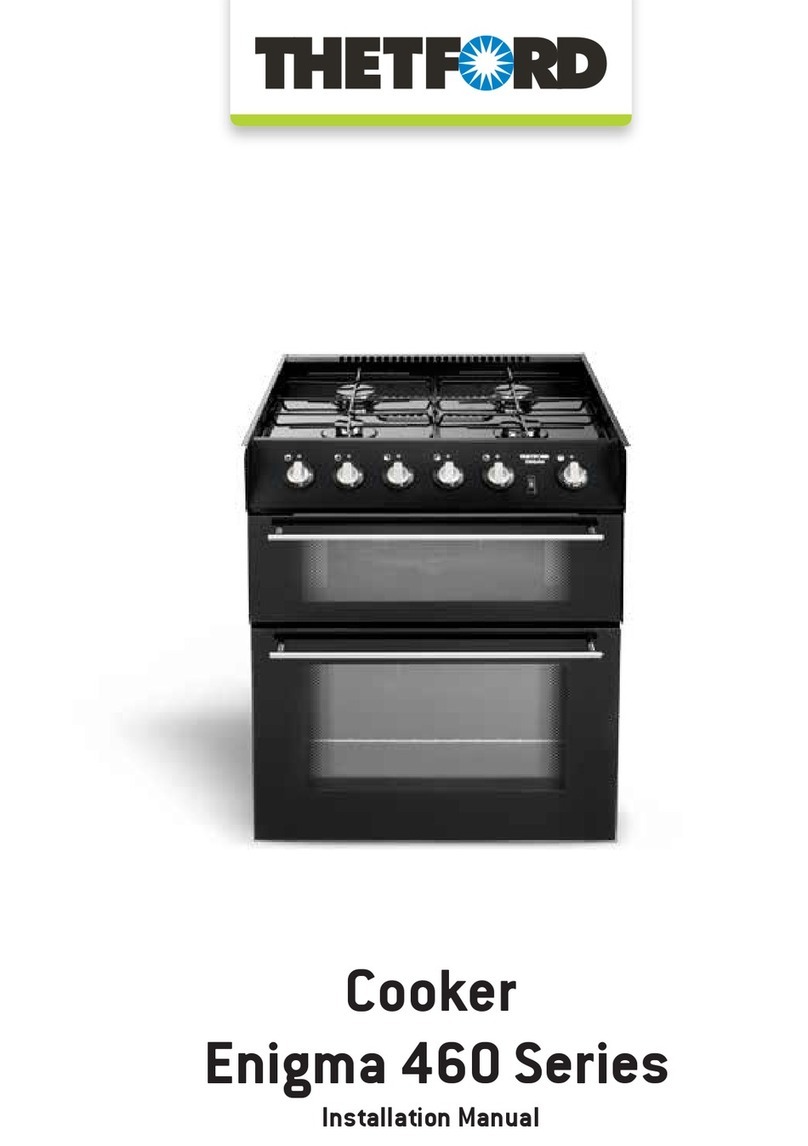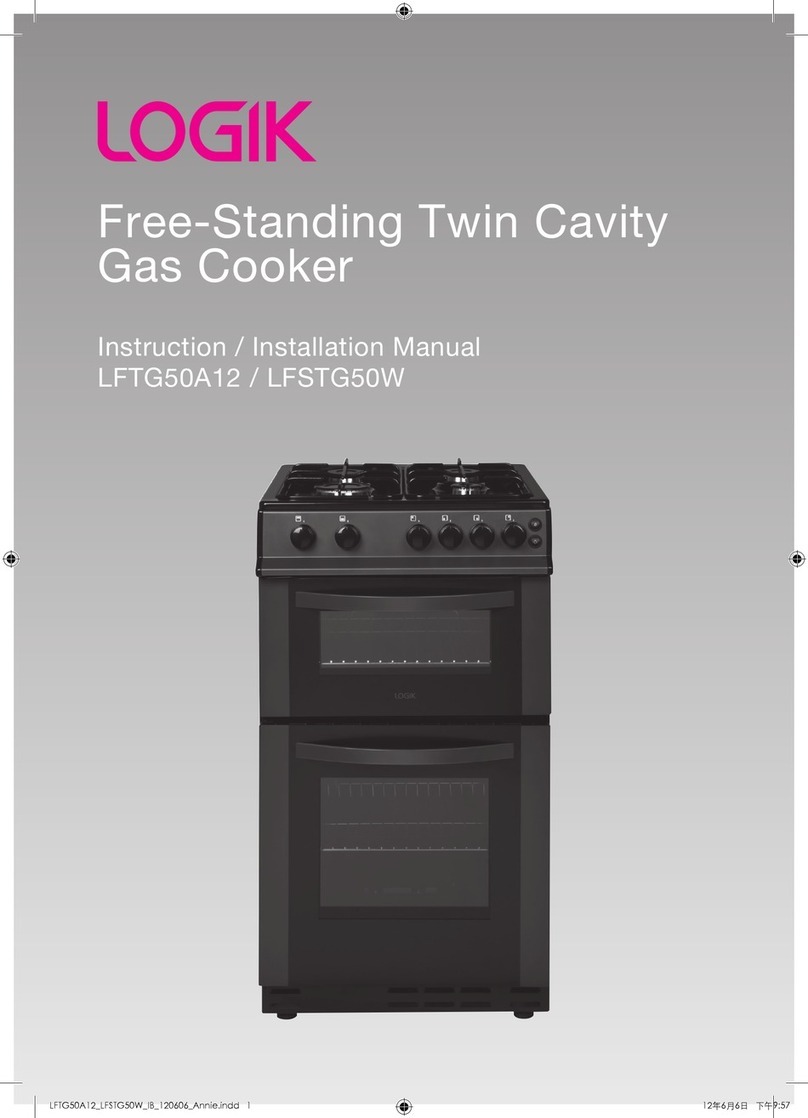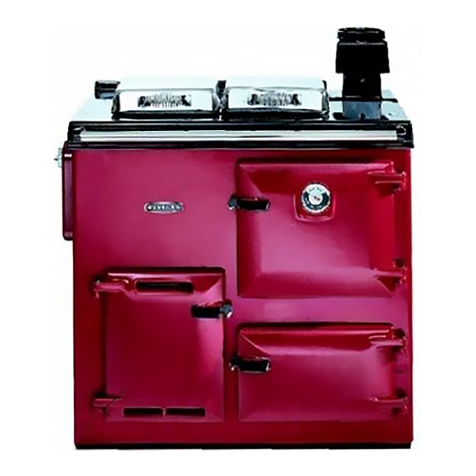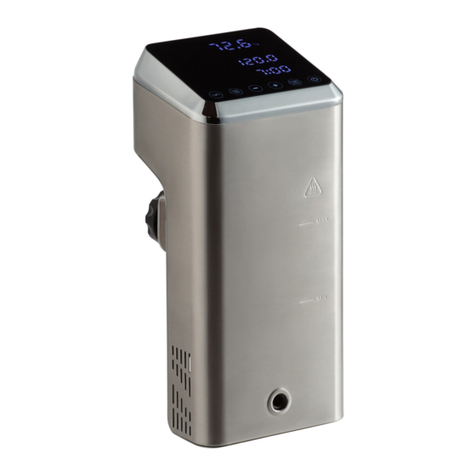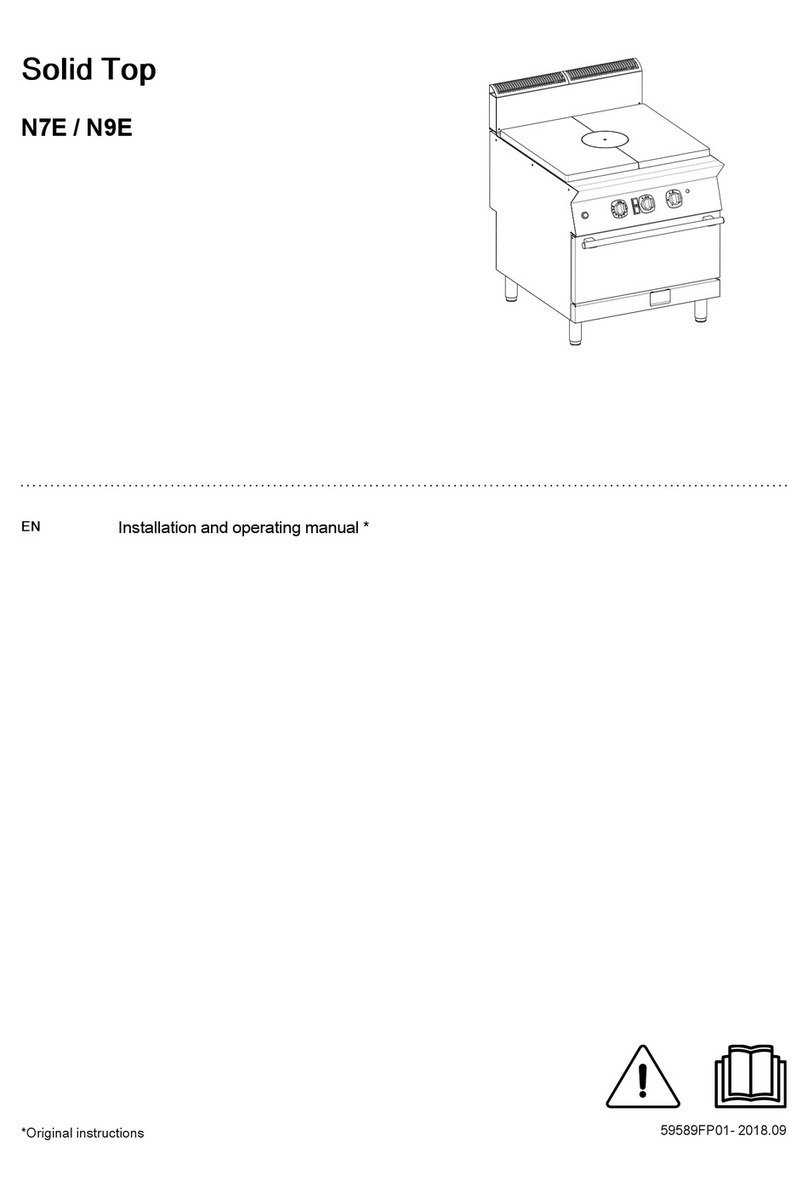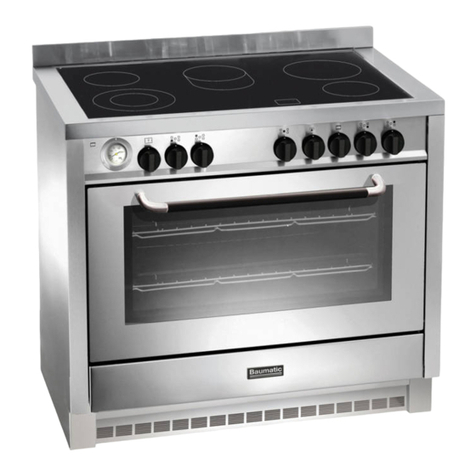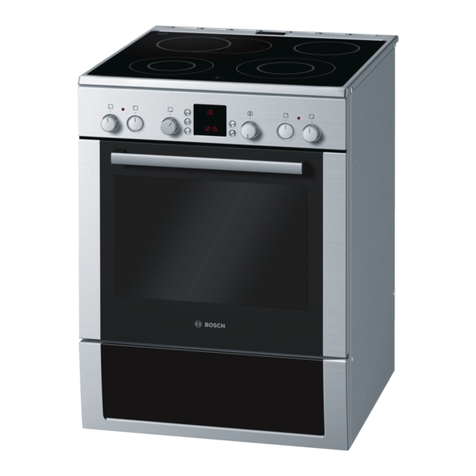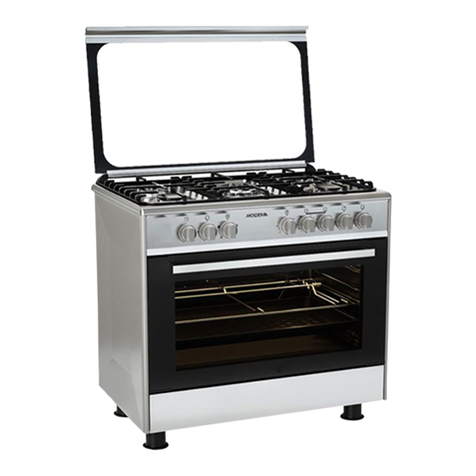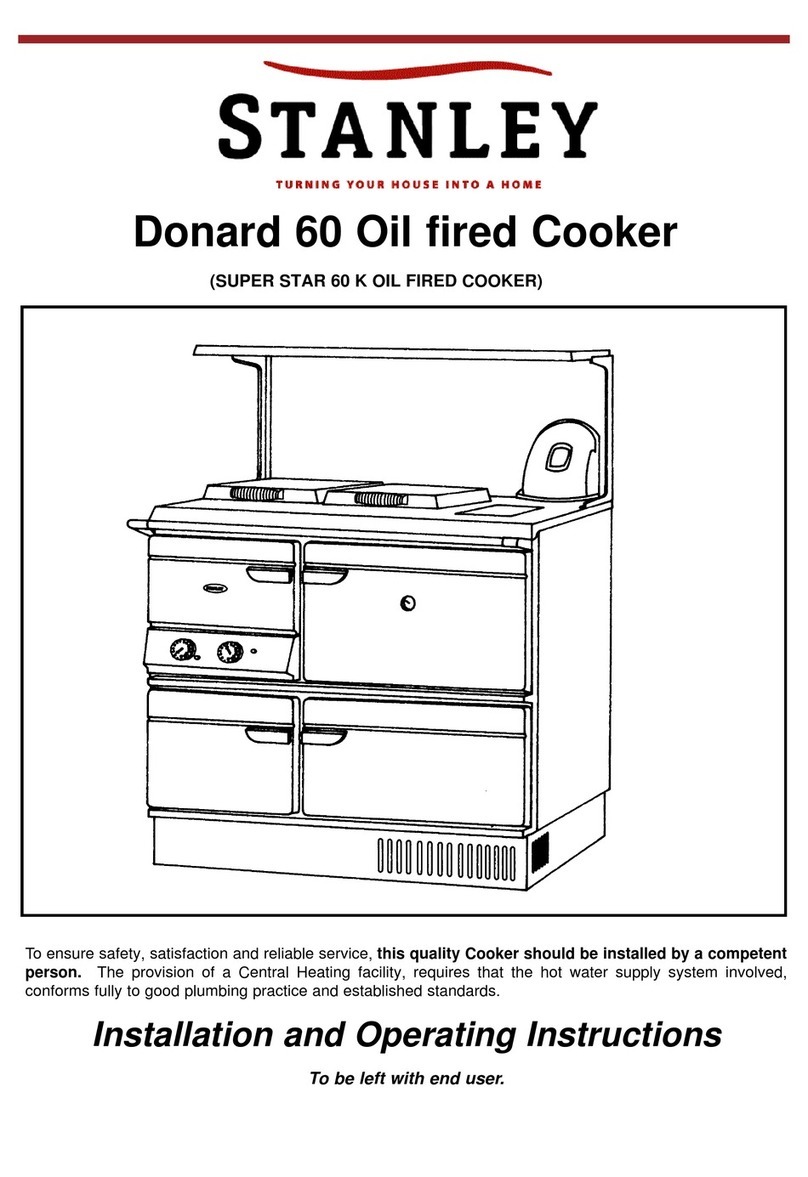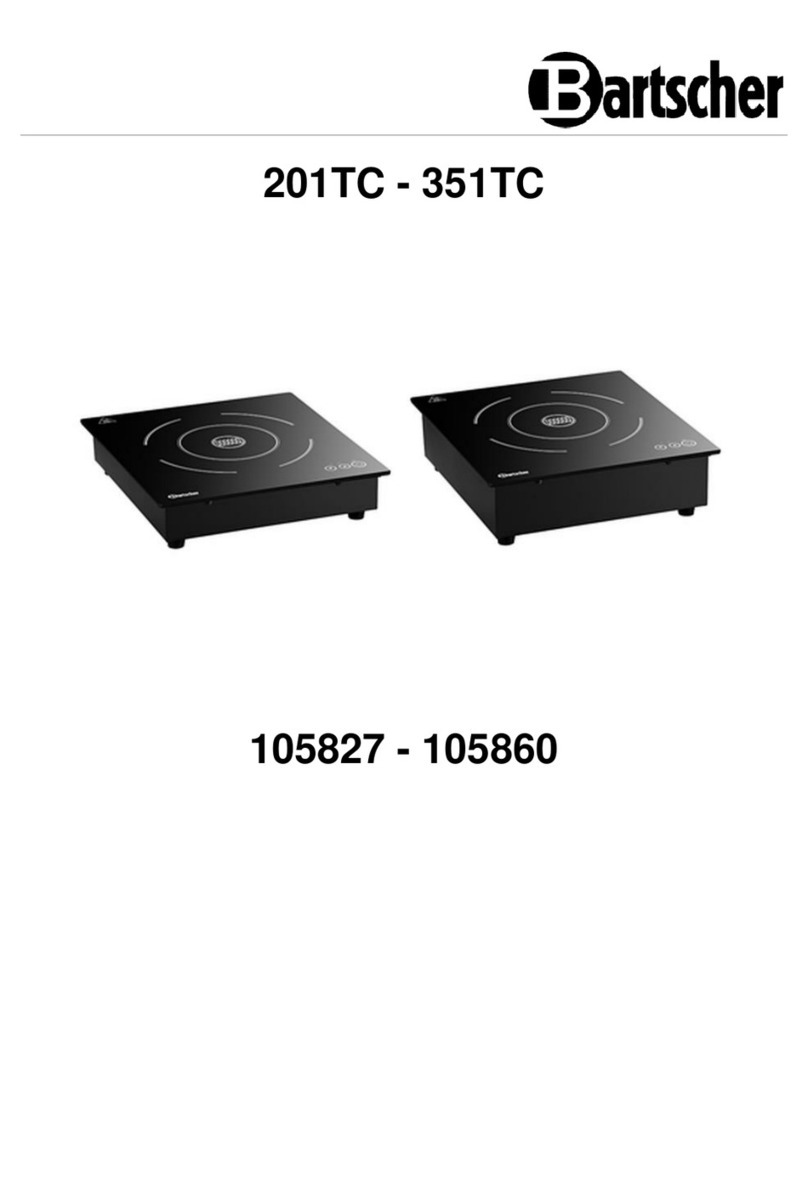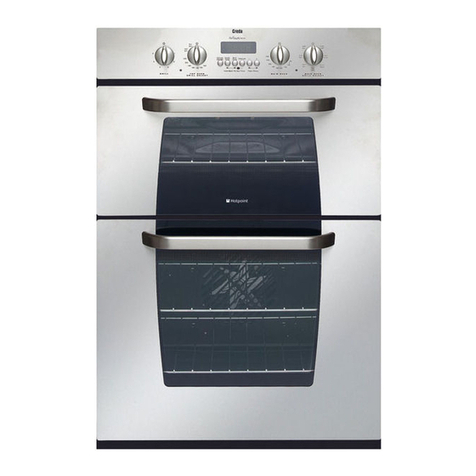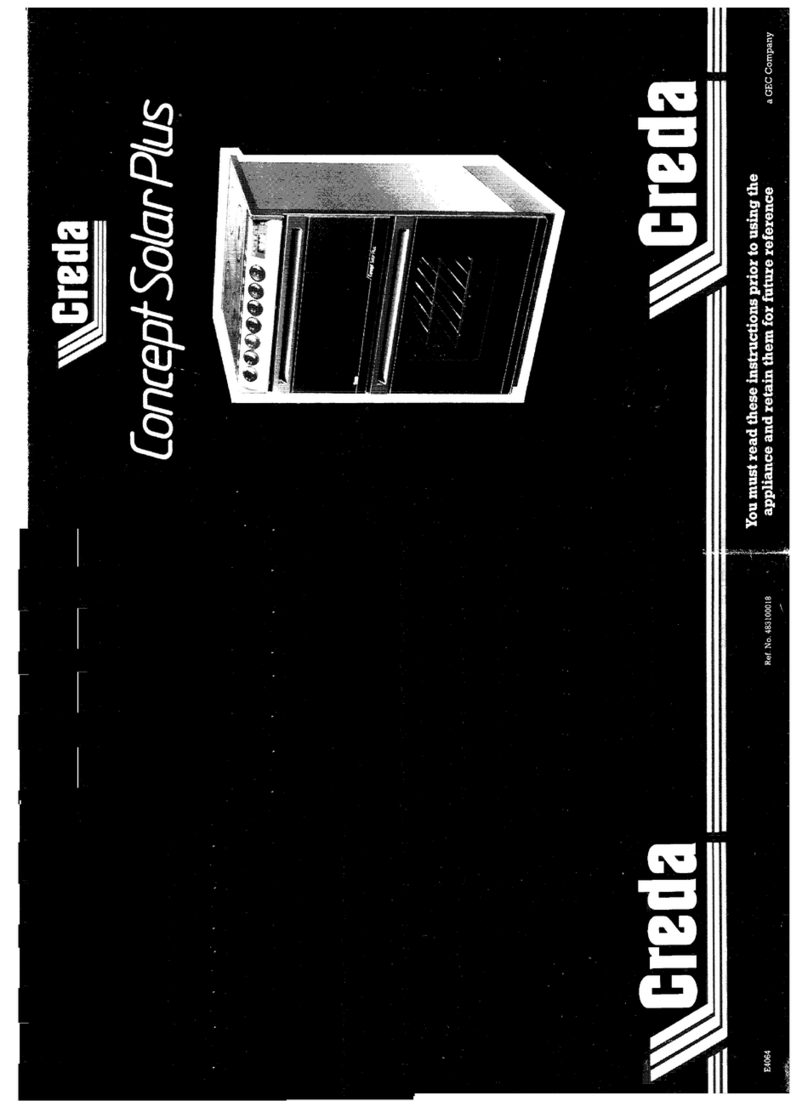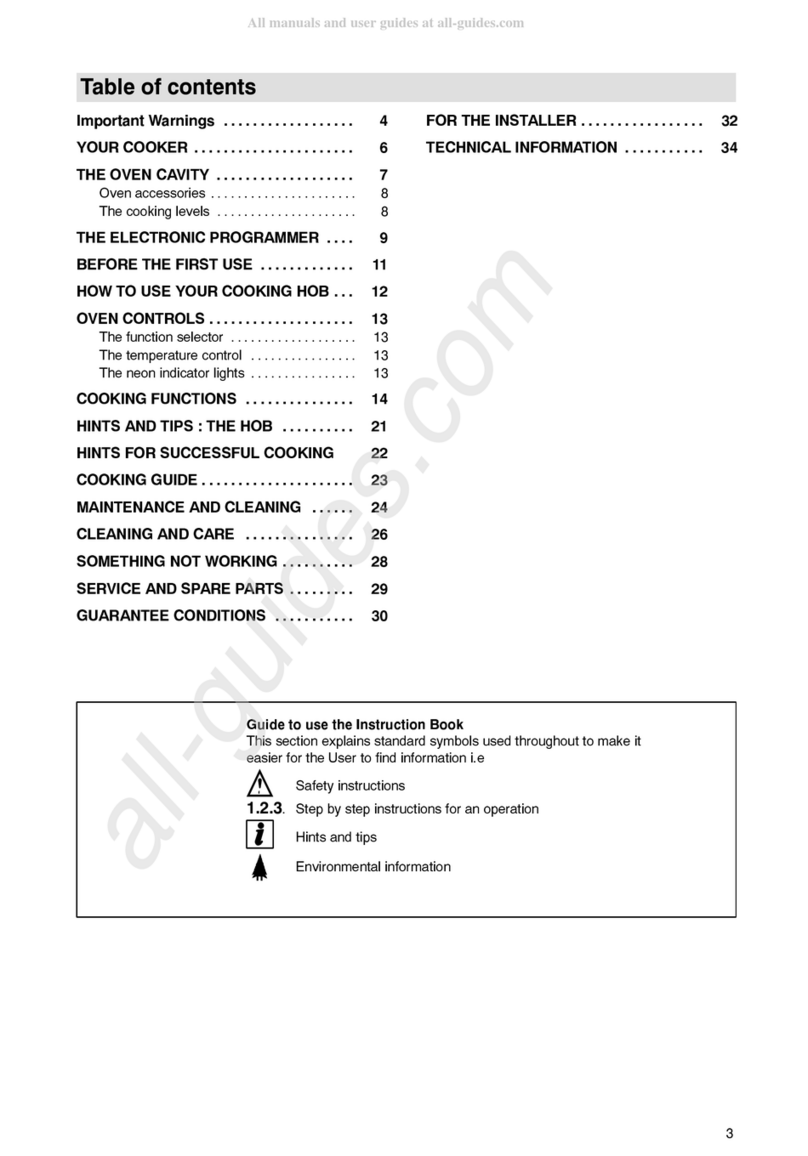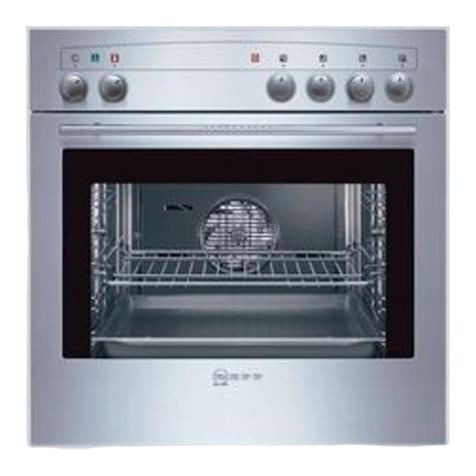
Cooking Guidelines
Best results will be obtained by the shelf positions in this guide. Although the oven heats up
quickly, it is recommended a 10 minute preheat be allowed. The oven should reach full
temperature in 15-20 minutes.
Most cookery books give details of the shelf positions and gas mark settings for each recipe.
If in doubt about a recipe you intend to use, study the recipe carefully then find a similar dish
in our guide and use our shelf position and gas mark setting recommendation. Shelf positions
are from the top down. When roasting with aluminium foil care must be taken that the foil
does not impair circulation or block the oven flue outlet.
Gas
Mark Temperature
(Centre - Shelf Pos. 2)
¼ - ½ 265-275ºF 130-135ºC Very cool Meringues
1 285 140 Cool Stewed fruit
2 300 150 Cool Rich fruit cake
3 330 165 Warm Baked custard
4 355 180 Moderate Victoria sandwich
5 385 195 Fairly hot Whisked sponges
6 410 210 Hot Short crust pastry
7 430 220 Hot Bread, scones
8 445 230 Very hot Puff pastry
9 465 240 Very hot Quick browning
Dish Temp
(°C) Shelf
Position Cooking Time
Very rich fruit cake 150 2 Approx. 60mins per 500g
Baked custard 165 3 50-60mins
Victoria sandwich 180 2 20-30mins
Small cakes 195 2 15-25mins
Shortcrust pastry 210 2 15-55mins
Scones 220 2 8-15mins
Puff pastry 230 2 15-30mins
Beef 165
220 3
3 25mins per 500g plus 25mins
15mins per 500g plus 20mins
Pork 165
220 3
3 30mins per 500g plus 35mins
25mins per 500g plus 25mins
OPERATION
Do's and Don'ts
DO read the user instructions carefully before using the appliance for the first time.
DO allow the oven to heat before using for the first time, in order to expel any smells
before the introduction of food.
DO clean the appliance regularly.
DO remove spills as soon as they occur.
DO always use oven gloves when removing food shelves and trays from the oven.
DO check that controls are in the off position when finished.
DO NOT allow children near the cooker when in use. Turn pan handles away from the
front so that they cannot be caught accidentally.
DO NOT allow fats or oils to build up in the oven trays or base.
DO NOT use abrasive cleaners or powders that will scratch the surfaces of the
appliance.
DO NOT under any circumstances use the oven as a space heater.
DO NOT put heavy objects onto open grill and oven doors.
Leaks
If a smell of gas becomes apparent, the supply should be turned off at the cylinder
IMMEDIATELY.
•Extinguish naked lights including cigarettes and pipes.
•Do not operate electrical switches.
•Open all doors and windows to disperse any gas escape.
•Never check for leaks with a naked flame, leak investigation should be carried out
using a leak detector spray.
•Check the gas is not escaping from an unlighted appliance
MAINTENANCE
This appliance needs little maintenance other than cleaning. After the unit has cooled all parts
should be cleaned using warm soapy water. Do not use abrasive cleaners, steel wool or
cleansing powders. When cleaning the burner ring it is essential to ensure that the holes do
not become blocked. The control knobs are a push fit and can be removed for cleaning. They
are interchangeable without affecting the sense of operation.
10
